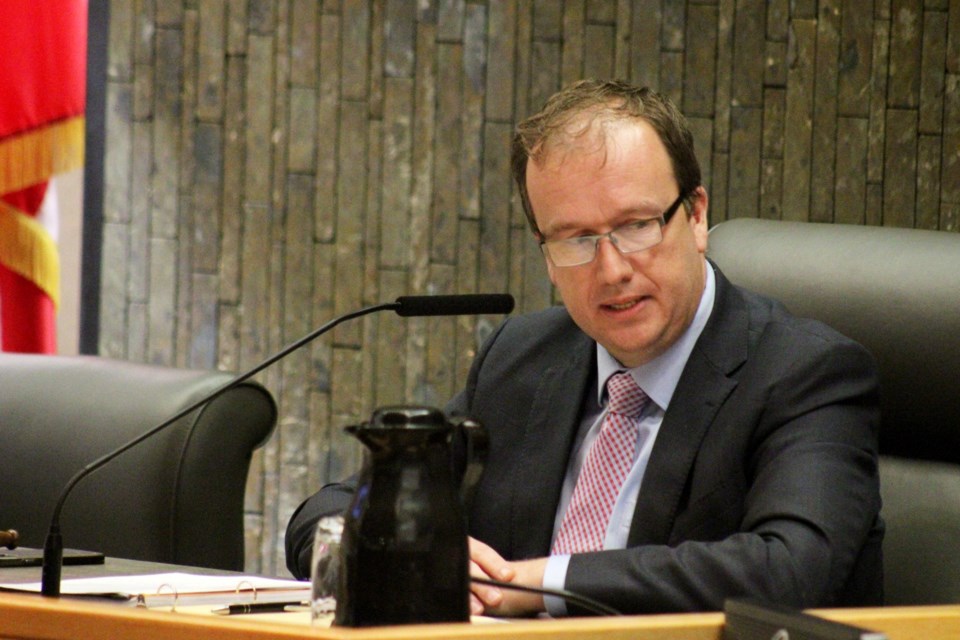Another study has dispelled the notion that more police means lower crime rates.
Published in last month’s Canadian Public Policy journal, the study found “no consistent correlations between police spending and municipal crime rates.”
The study collected police budget totals and crime severity index data for 20 of the nation’s most populous cities, ranging in population from Longueuil’s 252,828 residents to Toronto’s 2,988,408.
(For comparison, the 2021 Census counted Greater Sudbury’s population at 166,004.)
“Correlations between crime rates and police funding varied enormously,” the study noted, which suggests that “any potential associations must be influenced by other socio-political factors that vary by local context.”
Further, their analysis “found no strong correlation between net change in police funding and net change in crime rates across all municipalities.”
Mayor: People want to see more police

This finding is relevant to Greater Sudbury, whose municipal police service has been ramping up in recent years, supported by both the police board and city council.
Their 2023 budget increase of 5.66 per cent, approved by an 8-3 vote of city council, included hiring 10 additional sworn members and two special constables.
Their 2024 and 2025 budget increases of a respective 8.09 per cent and 6.2 per cent were unanimously greenlit by city council last month. It allows them to hire an additional 26 staff members, including 20 constables.
Between 2019 to 2023, Greater Sudbury Police Service (GSPS) was the single largest contributor to municipal tax levy increases, making up 26 per cent of the cumulative cost jump.
Mayor Paul Lefebvre sits on the police board, which unanimously approved the 2024-25 budgets on Nov. 1, shortly after which he told Sudbury.com that adding more police is in keeping with what he’s heard the community request.
“Right now, the community wants and needs more policing, in the sense our residents don’t feel safe and there’s a demand to see more police presence,” he said, citing their multi-year effort to grow the municipal police force as fulfilling a common request of the public.
(In justifying the hiring of more police, GSPS Chief Paul Pedersen also cited the growing complexity of police work and a recent surge in violent crime, which is time-consuming work for police and strains the existing complement of staff. He described their requested budget hike as being “at minimum” what they require “to provide adequate and effective policing in this community based on the needs of the community.”)
Politics of policing

Bolstering police forces is a common pledge among politicians, according to the study published by Canadian Public Policy, titled “Police Funding and Crime Rates in 20 of Canada's Largest Municipalities: A Longitudinal Study,” authored by a team of researchers led by Mélanie Seabrook.
“The political popularity of increasing police spending in some municipalities can incentivize politicians to increase police budgets even when it is not required from a public safety standpoint,” according to the study.
“In the context of the United States, strong evidence suggests that police budgets often surge markedly during an electoral cycle, a hypothesis that has not yet been tested in Canada but ought to be.”
This happens, the study notes, despite limited available information on the correlation between police budgets and crime, in which “even the most rudimentary questions about police budgets in Canada have not been systematically investigated.”
Part of the study compared changes in police funding with changes in crime rates the following year, but only one municipality out of 17 (Winnipeg) recorded a subsequent decrease in crime rates, “although no causality can be established from this analysis.”
Murky connection
Sudbury.com reported on the murky connection between the number of police and crime rates last year, comparing the number of criminal violations reported annually in Statistics Canada data against the number of police officers over the course of the prior two decades.
While the number of sworn members steadily increased from 241 in 2002 to 274 by the start of 2022, the city’s overall crime rate fluctuated but remained generally unchanged.
Since that story was published, Statistics Canada has added data for 2022, counting 9,637 criminal violations, which was a slight decrease from the previous year’s 9,740, but still within the 20-year average of 10,175.
By the end of 2023, the city’s authorized strength of sworn members was 283. As a result of the 2024-25 approved budget, their sworn strength is now 293, and will hit 303 next year.
Although Seabrook’s study compared police budgets rather than the number of police, it notes there’s “little difference” given the fact the majority of policing organizations in North America spend between 80 and 90 per cent of their budgets on salaries.
Last year, 89.1 per cent of GSPS’s $72-million budget was earmarked for salaries and benefits.
Despite GSPS’s 2024-25 budget boost, it still ranks below the average, at least compared to the 20 most populous cities in the country.
According to Seabrook’s study, the mean proportion of the total municipal operating budgets allocated to police services among the 20 cities was 15 per cent (ranging from Quebec and Ottawa’s eight per cent to Winnipeg’s 26 per cent).
The City of Greater Sudbury’s total 2024-25 operating budget is $1.59 billion, of which $162.1 million is allocated toward police, yielding a 10.2-per-cent share devoted toward policing.
If not the number of police, as Seabrook’s study suggests, what are the main drivers of crime rates?
“Unfortunately, I've had a lot of trouble finding studies examining the drivers of crime rates in Canada,” Seabrook told Sudbury.com. “There seems to be a big gap in research on the topic in Canada specifically.”
Within their paper, her team cited a decades-old study which suggests changing age demographics and increasing employment rates in the 1990s were more likely to have had an impact on crime rates than police strength.
International studies, including those in the United States, tend to look at socioeconomic drivers.
“There's also some evidence in the U.S. that increasing police resources sometimes increases crime rates due to detection bias (more arrests being made),” she added.
Her team’s study cites other reports which “find evidence of a positive relationship between increases in police budgets and increases in low-level arrests,” noting that street-level policing is “a highly discretionary matter,” with officers maintaining “a wide latitude of discretion in their day-to-day work.”
GSPS staff are currently working to select candidates for a March intake at Ontario Police College to help bolster their number of sworn members from the 283 currently employed to their new authorized strength of 293 for 2024.
Tyler Clarke covers city hall and political affairs for Sudbury.com.
